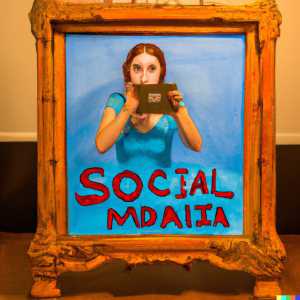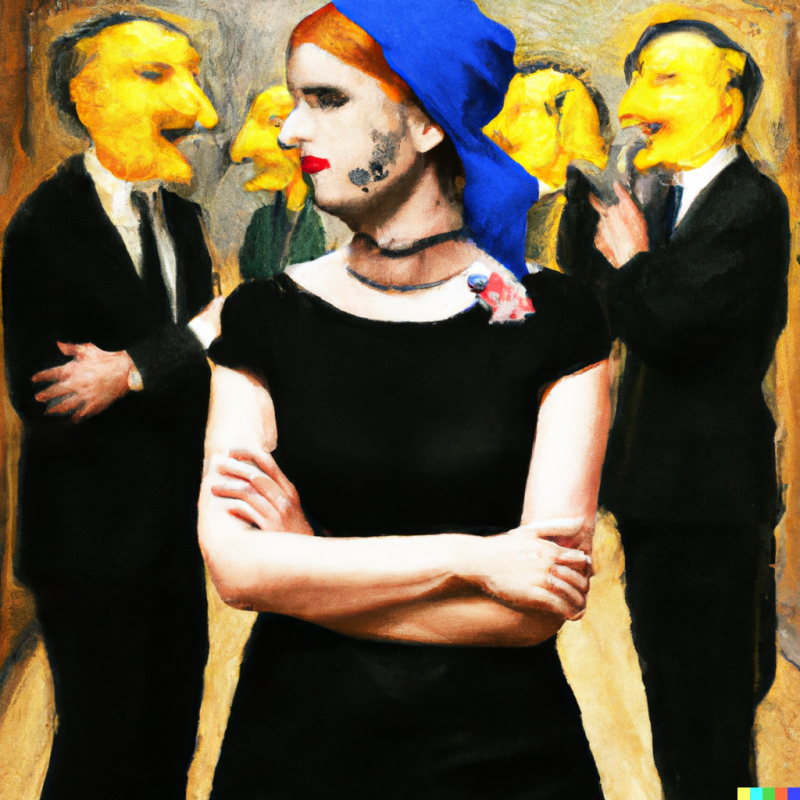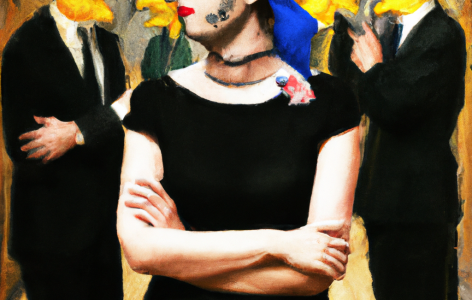Like in the realm of the physical world, the online sphere mirrors, and even in some cases exacerbates, the dark sides of society, and you don’t have to look far around sinister and forbidden corners of the web to find examples of this.
Almost 90% of men/women globally are biased against women, despite decades of progress on gender equality.
Think about the recent rise and fall of Andrew Tate, former American-British pro kickboxer turned internet personality. The mass dissemination of Tate’s misogynistic and harmful content on Social Media was partly due to the set up of his Hustler University affiliate marketing program. Much like a pyramid scheme, it allowed its members to receive commissions when signing up new members, in turn enticing them to share his content. Social media, as we know, works at a speed even its creators can’t catch up with and even after the ban of Andrew Tate on multiple platforms, his content is still being shared.
Social media enables everyone with access to have a voice with far fewer consequences than in real life, the perfect condition for those intending to cause harm
73% of women worldwide have experienced online violence, with women aged 18 to 24 at a heightened risk.

Women targeted in online harassment are more than twice as likely as men to say most recent incident was very or extremely upsetting
All genders experience harassment online, yet women and are more likely than men to be harassed because of their gender. With the arrival of the internet, new forms of online violence against women, often sexual violence, have emerged including revenge porn, cyberharassment, threats of rape etc. The situation is also very dire for members of the LGBTQ+ community, but very little data globally is collected and much is still to be made visible on the matter. If one can argue that gender is a social category, it is far from the only category worth mentioning when it comes to discrimination. Socio-economic status, sexuality, race, religion, age, identity etc. also play in. When additional unfavorable social categories intertwine with gender, the discrimination increases.
When it comes to politics, a field where the survival of the fittest rules, women are met with additional hurdles, firstly in overcoming the barrier of access and secondly in being considered a human

The absence of global data on violence against women politicians is very real. Often the data is collected on a small scale and through surveys. But this does not mean the problem is non-existing. The violence is often used as a tool to silence and discourage women and they are frequently targeted during elections.
When talking about mis- and disinformation the mind often travels to Donald Trump’s two election campaigns, his endless crusades to discredit the press, the blatant lies and denial of fact and truth, the list is long. Gendered disinformation is part of this issue. Digging deep into the root of society’s bias against women, the perpetrator uses it as a weapon against not only women but democracy. Although slow, we see an increase globally in the participation of women in politics, but gender-based violence and disinformation is creating a barrier for them to participate. We have witnessed many examples globally to know such behavior is very real. Just think about the false narratives undermining Hillary Clinton during the 2016 US election to the use of sexual distortion tactics against for example Esther Passaris Kenyan politician, victim of a smear campaign orchestrated by a male colleague. Diane Shima Rwigara Rwandan presidential candidate in 2017 and Ukrainian parliamentarian Svitlana Zalishchuk, were both victims of the spread of fake pornographic images online. The list is long.
International organizations are reigning in on the topic of mis- and disinformation, becoming increasingly popular in multilateralism, as we observe its harmful effects on society and democracy. On several occasions big tech companies have been invited to events and encouraged to commit to find a solution that can regulate its spread. So far we have seen less than the bare minimum being done when it comes to gender-based violence. The platforms often hide behind the concept of free speech, which often is used as an excuse to avoid action. In terms of violence against women, nothing specific is being done on most platforms, as it all fits under the umbrella of “harmful content”.
In the coming days I will zoom in on a specific event…So stay tuned…
References:
Hustlers University Affiliates | By Andrew (Cobra) Tate (hustleruniversity.eu)
The Downfall Of Andrew Tate And Its Implications (forbes.com)
There’s No Comparing Male and Female Harassment Online | Time
https://www.undp.org/press-releases/almost-90-men/women-globally-are-biased-against-women
https://en.unesco.org/sites/default/files/highlightdocumentenglish.pdf
https://www.pewresearch.org/internet/2021/01/13/the-state-of-online-harassment/
https://www.unwomen.org/sites/default/files/Headquarters/Attachments/Sections/Library/Publications/2020/EGM-report-Data-and-violence-against-women-in-politics-en.pdf
https://www.theguardian.com/us-news/2021/may/06/hillary-clinton-guardian-disinformation-big-tech-facebook
https://www.the-star.co.ke/news/2019-06-10-passaris-hits-back-at-sonko-over-hotel-invite-allegation/
https://www.washingtonpost.com/news/global-opinions/wp/2017/08/02/what-happened-when-i-tried-to-run-to-become-rwandas-first-female-president/
https://www.wilsoncenter.org/sites/default/files/media/uploads/documents/Report%20Malign%20Creativity%20How%20Gender%2C%20Sex%2C%20and%20Lies%20are%20Weaponized%20Against%20Women%20Online_0.pdf

